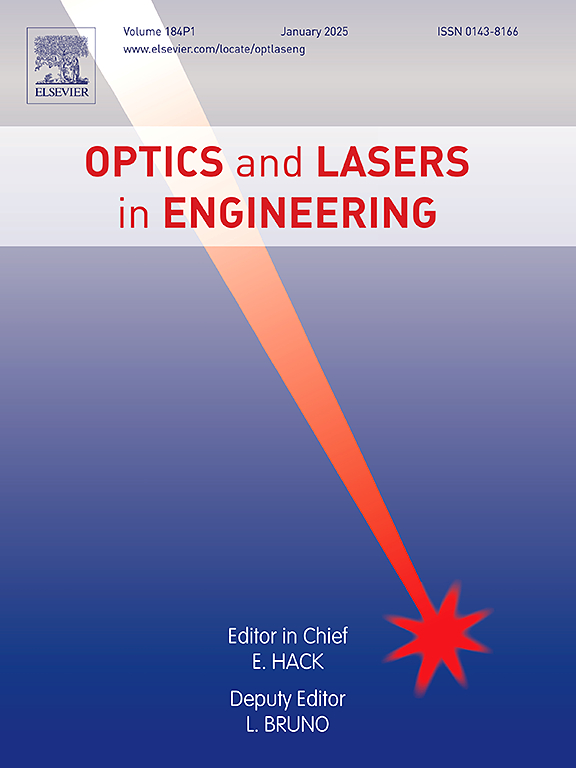具有可解释神经网络的高噪声场景下全息术的从粗到精的注意引导自动对焦
IF 3.5
2区 工程技术
Q2 OPTICS
引用次数: 0
摘要
数字全息的自动对焦通常依赖于各种判据函数来评价对焦质量。然而,在高度干扰的环境中,这些功能往往难以准确地确定焦平面。本文提出了一种在极端高噪声环境下实现低质量数字全息图像自动对焦的方法。该方法将神经网络作为解决方案的一部分,但不完全依赖于其输出,从而克服了计算过程中的不确定性。我们的方法的一个关键特征是神经网络注意机制的应用。这些机制擅长识别图像中影响对焦质量的关键区域,从而在复杂的视觉设置中实现精确的对焦度量计算。在我们的方法中,神经网络的设计仅依赖于区分焦点和非焦点区域,这是神经网络相对简单的任务。这种设计减少了我们对大型数据集的依赖。此外,由于其模块化结构,我们的方法可以毫不费力地集成到各种成像环境中,展示了出色的即插即用能力。实验结果表明,该方法不仅提高了数字全息的自动对焦精度,而且在其他科学和工程领域具有推广应用的前景。我们的研究结果表明,深度学习在解决图像分析中的类似挑战方面具有更广泛的应用潜力,为智能、数据高效的图像处理开辟了新的途径。本文章由计算机程序翻译,如有差异,请以英文原文为准。
A coarse-to-fine attention-guided autofocusing for holography under high noisy scenes with explainable neural network
Autofocusing of digital holography typically relies on various criterion functions to evaluate the focus quality. However, these functions often struggle to accurately determine the focal plane in highly interferential environments. In this paper, we present a method for autofocusing of low-quality digital holographic images under extreme high noise environments. This approach incorporates a neural network as part of the solution but does not rely solely on its output, thereby overcoming uncertainties during the computation process. A key feature of our approach is the application of neural network attention mechanisms. These mechanisms excel at recognizing key areas within an image that significantly impact focus quality, thereby enabling precise focus metric calculations in complex visual settings. In our approach, the design of neural network relies solely on distinguishing focused from unfocused areas, a relatively simple task for neural networks. This design reduces our dependency on large datasets. Additionally, due to its modular construction, our method can be effortlessly integrated into diverse imaging contexts, demonstrating excellent plug-and-play capabilities. Experimental results demonstrate that our method not only enhances the precision of autofocus in digital holography but also shows promise in extending its applicability to other scientific and engineering fields. Our findings suggest potential for the broader application of deep learning in addressing analogous challenges in image analysis, opening new avenues for intelligent, data-efficient image processing.
求助全文
通过发布文献求助,成功后即可免费获取论文全文。
去求助
来源期刊

Optics and Lasers in Engineering
工程技术-光学
CiteScore
8.90
自引率
8.70%
发文量
384
审稿时长
42 days
期刊介绍:
Optics and Lasers in Engineering aims at providing an international forum for the interchange of information on the development of optical techniques and laser technology in engineering. Emphasis is placed on contributions targeted at the practical use of methods and devices, the development and enhancement of solutions and new theoretical concepts for experimental methods.
Optics and Lasers in Engineering reflects the main areas in which optical methods are being used and developed for an engineering environment. Manuscripts should offer clear evidence of novelty and significance. Papers focusing on parameter optimization or computational issues are not suitable. Similarly, papers focussed on an application rather than the optical method fall outside the journal''s scope. The scope of the journal is defined to include the following:
-Optical Metrology-
Optical Methods for 3D visualization and virtual engineering-
Optical Techniques for Microsystems-
Imaging, Microscopy and Adaptive Optics-
Computational Imaging-
Laser methods in manufacturing-
Integrated optical and photonic sensors-
Optics and Photonics in Life Science-
Hyperspectral and spectroscopic methods-
Infrared and Terahertz techniques
 求助内容:
求助内容: 应助结果提醒方式:
应助结果提醒方式:


